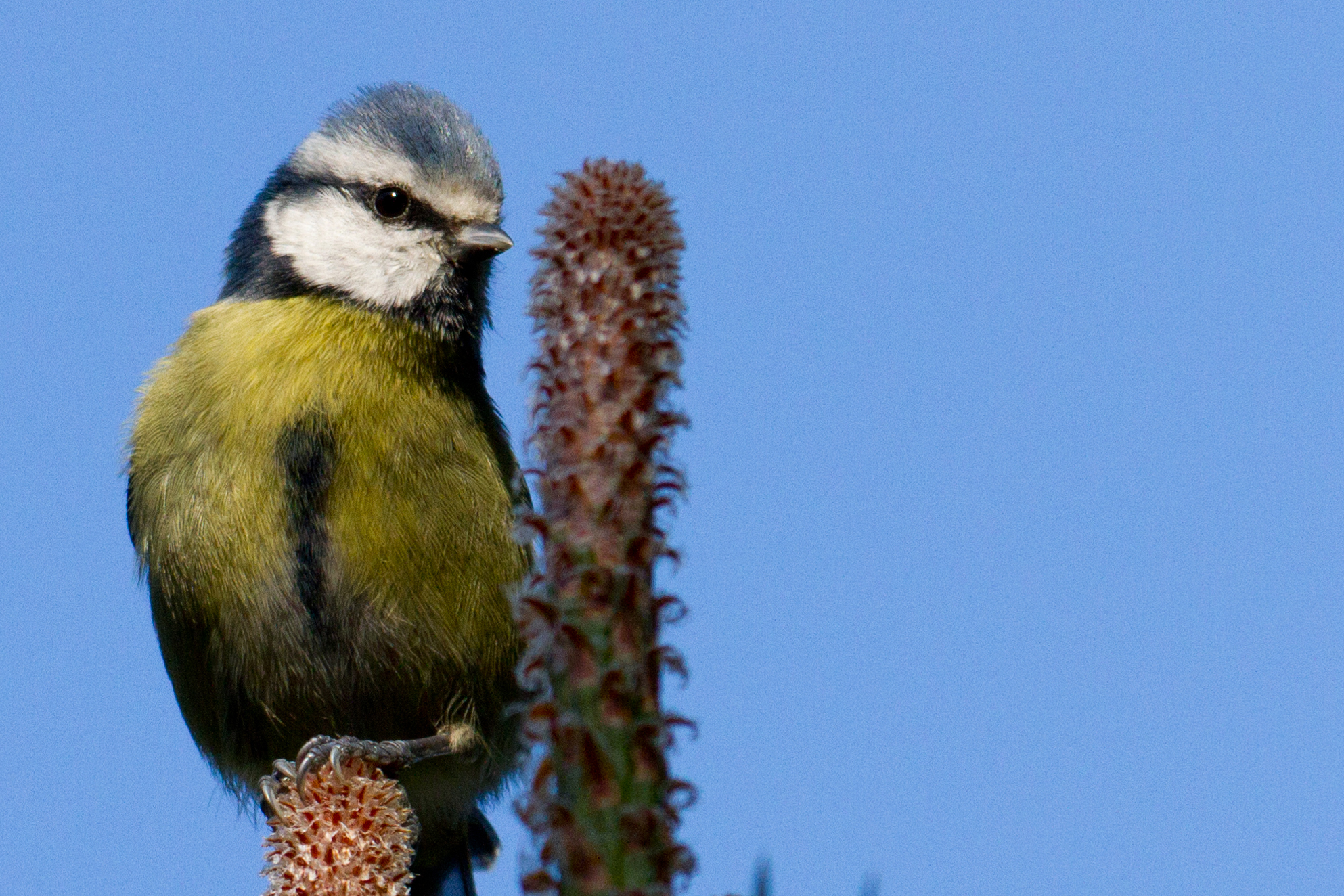
Blue Tit
Parus caeruleus
The Blue Tit is distributed throughout the country and occurs in a wide range of wooded habitats as forests, riparian corridors, montado landscapes, orchards, hedgerows and tree gardens. Of the five species of tits occurring in Portugal, this is the most common in urban centers, mainly in parks, gardens and boulevards.
Its diet consists of insects and spiders captured mostly in the foliage, but during the autumn and winter can eat fruits and seeds.
Blue Tits owe their name to the bluish hue of its crown and wings. Its scientific name – Parus caeruleus – shows this feature: caeruleus is the Latin term for its bluish color, a type of blue identical to that shown by these birds, in fact a natural pigment (copper carbonate) widely used in medieval times; Parus means precisely “titmouse” or “little bird” and names the tits family that gathers more than 50 species of these birds, distributed mostly in the northern hemisphere.
The tits are very vocal birds, its songs are very characteristic and appealing: 2-3 sharp notes, followed by a fast cascade of shorter notes, issued by the males.
Text: João E. Rabaça